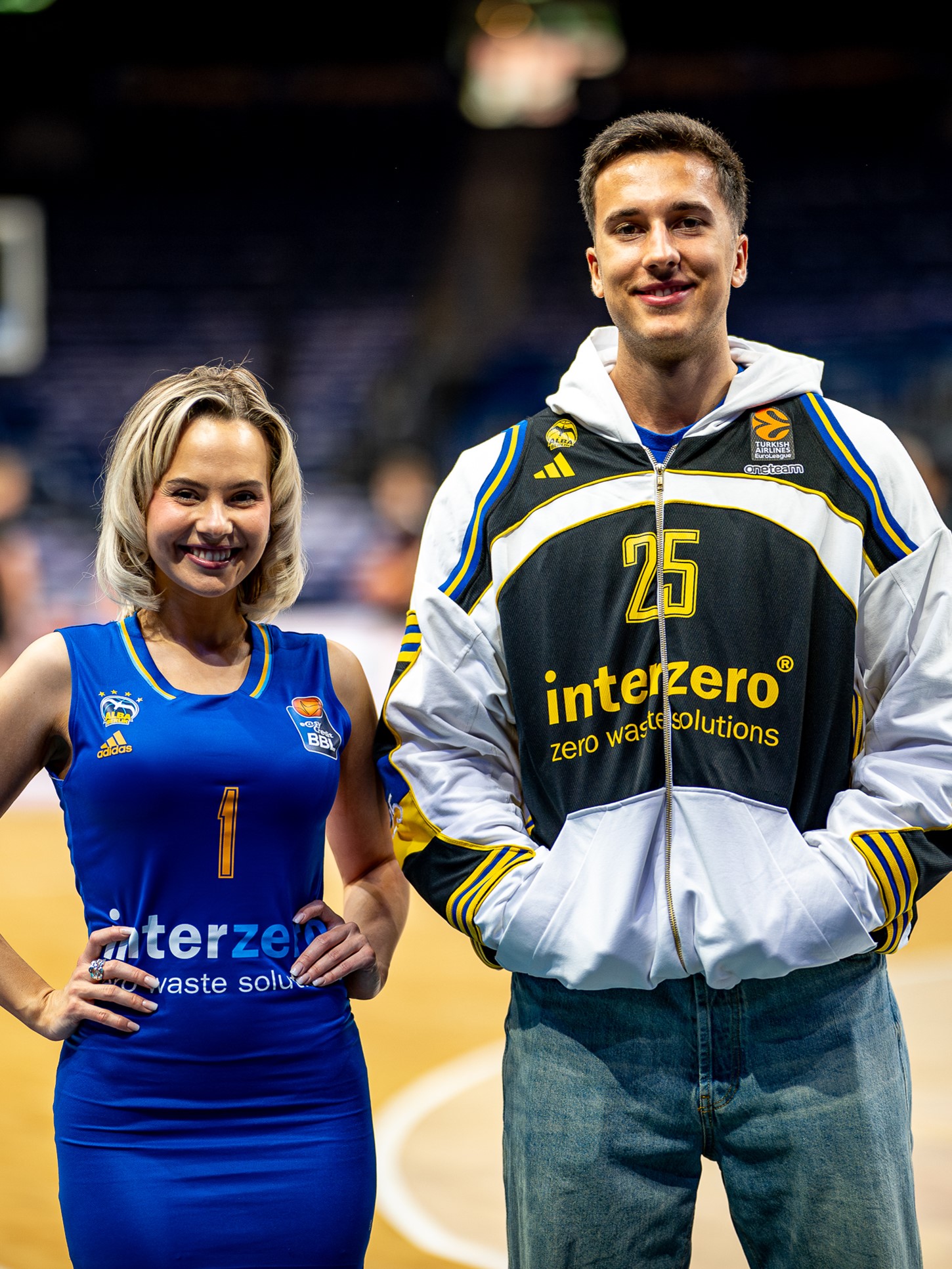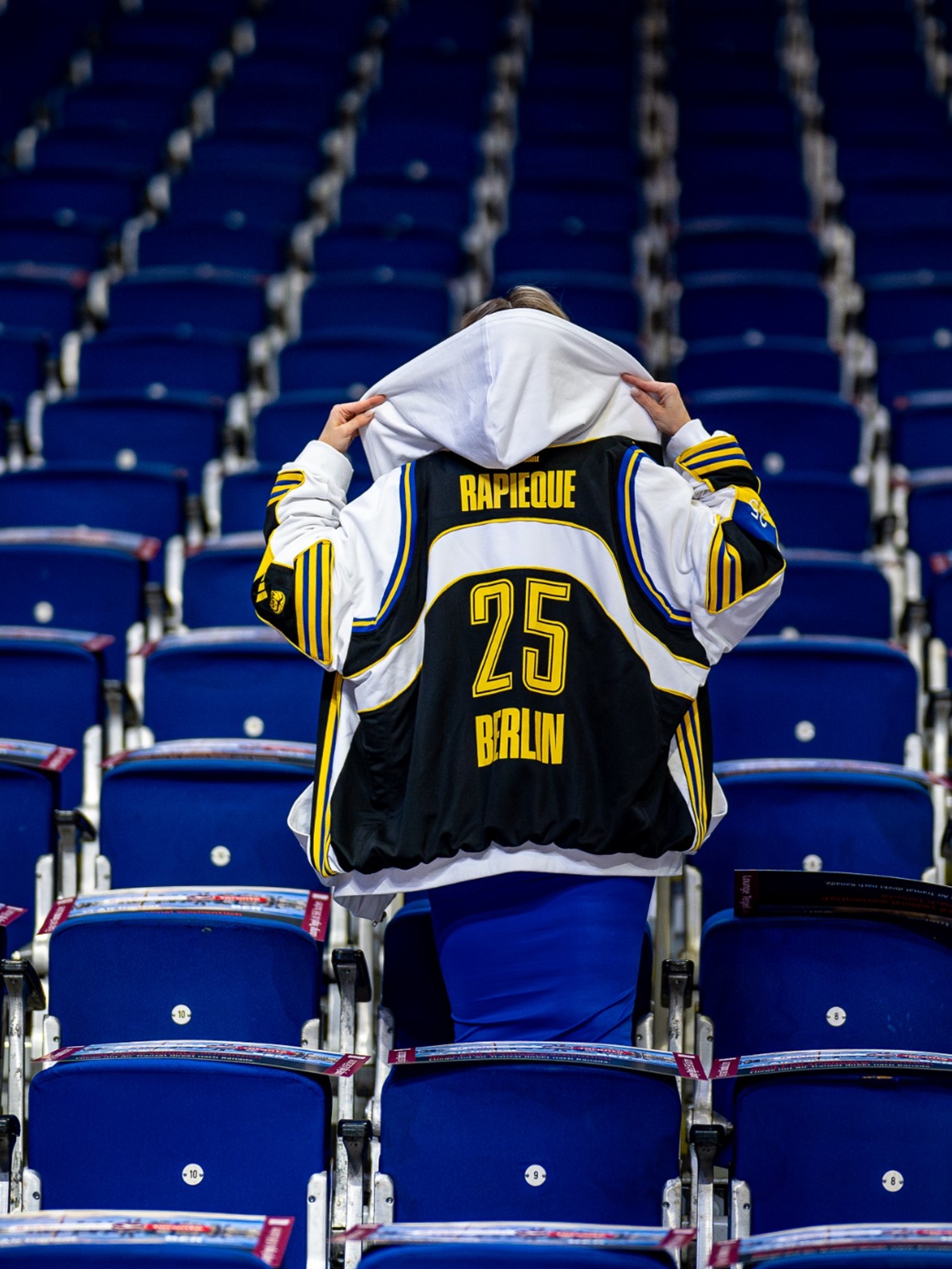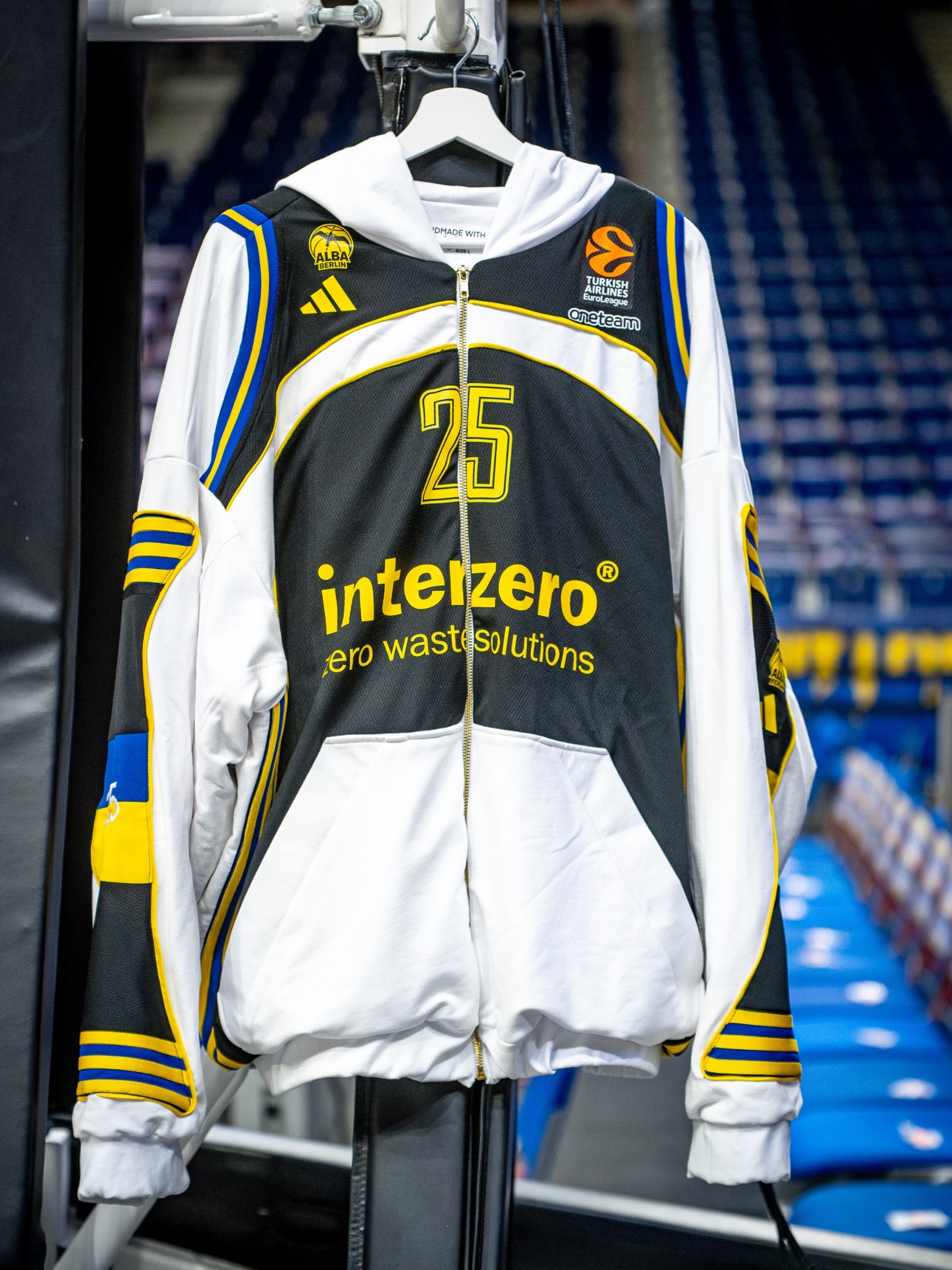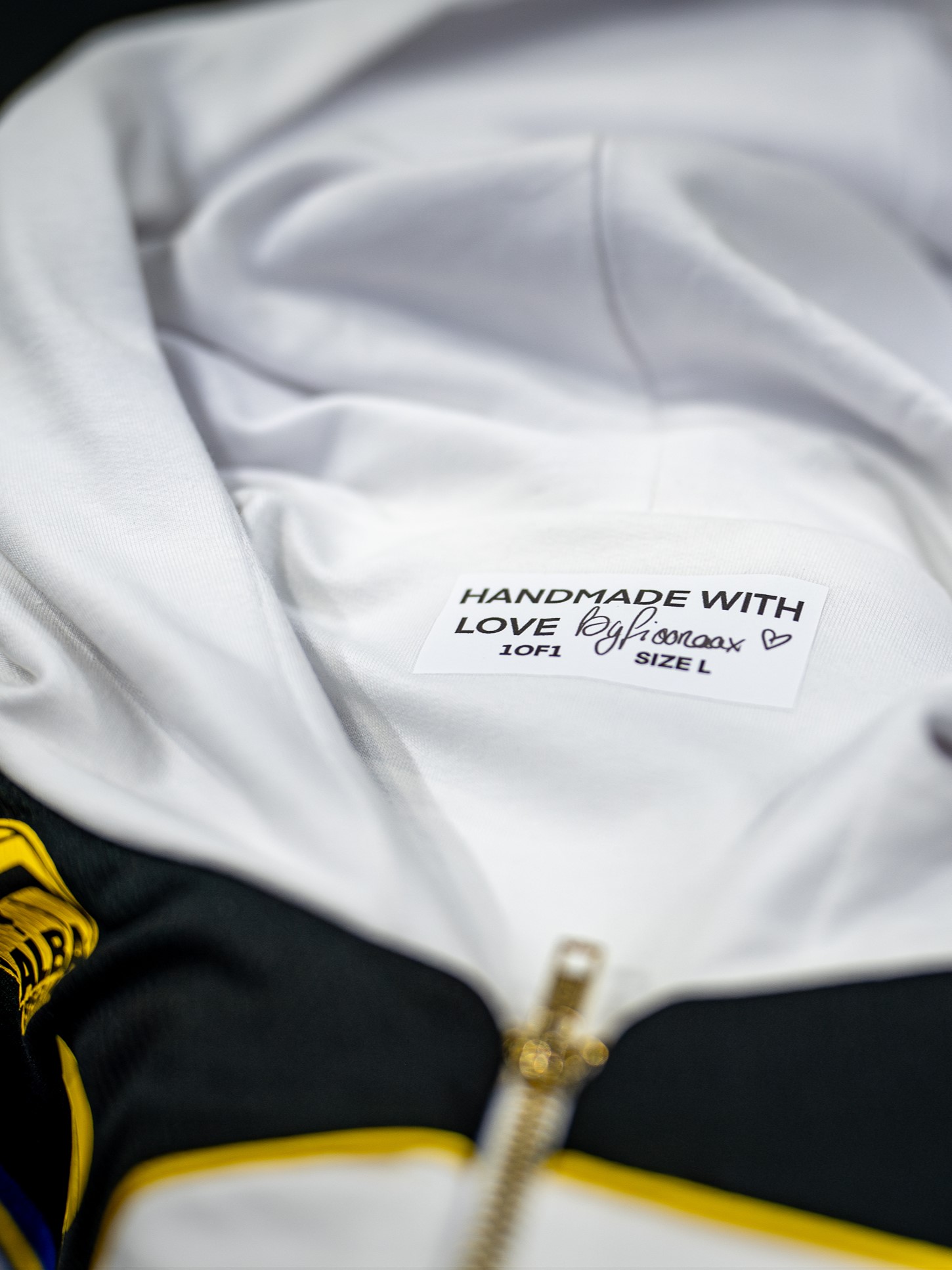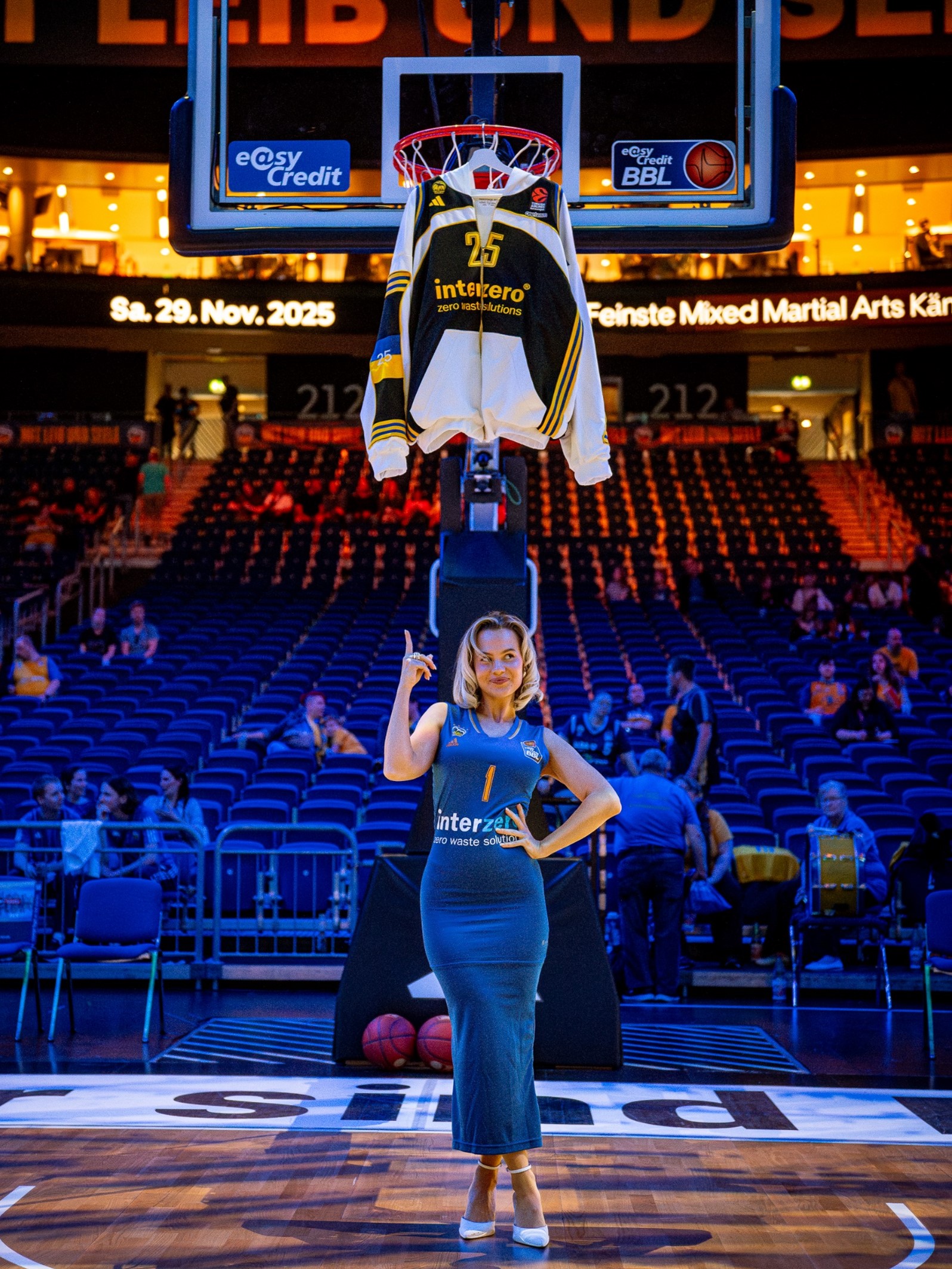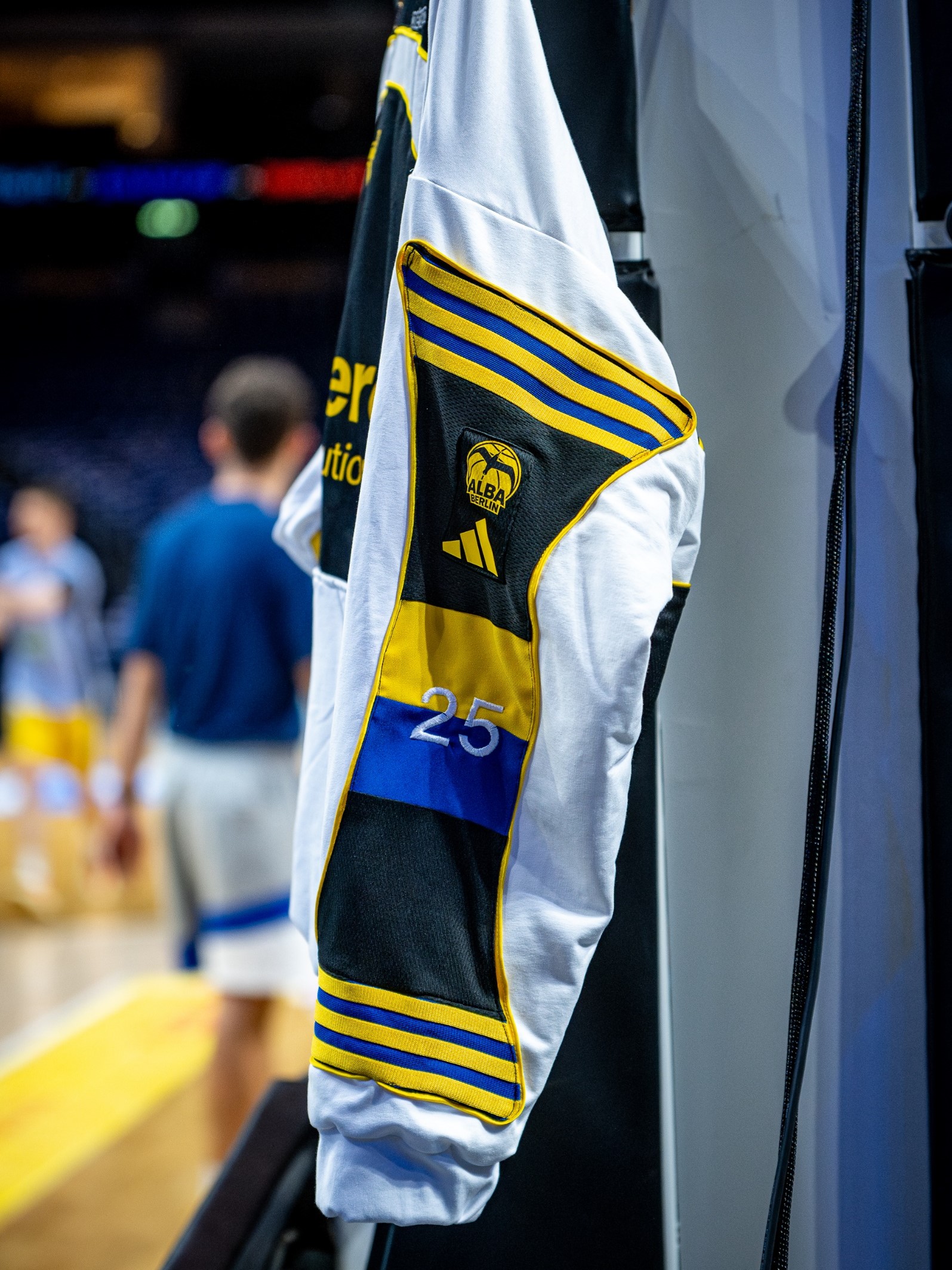From court to street
Win a unique handmade piece made from an old ALBA jersey - for more sustainability in sport and style in your everyday life
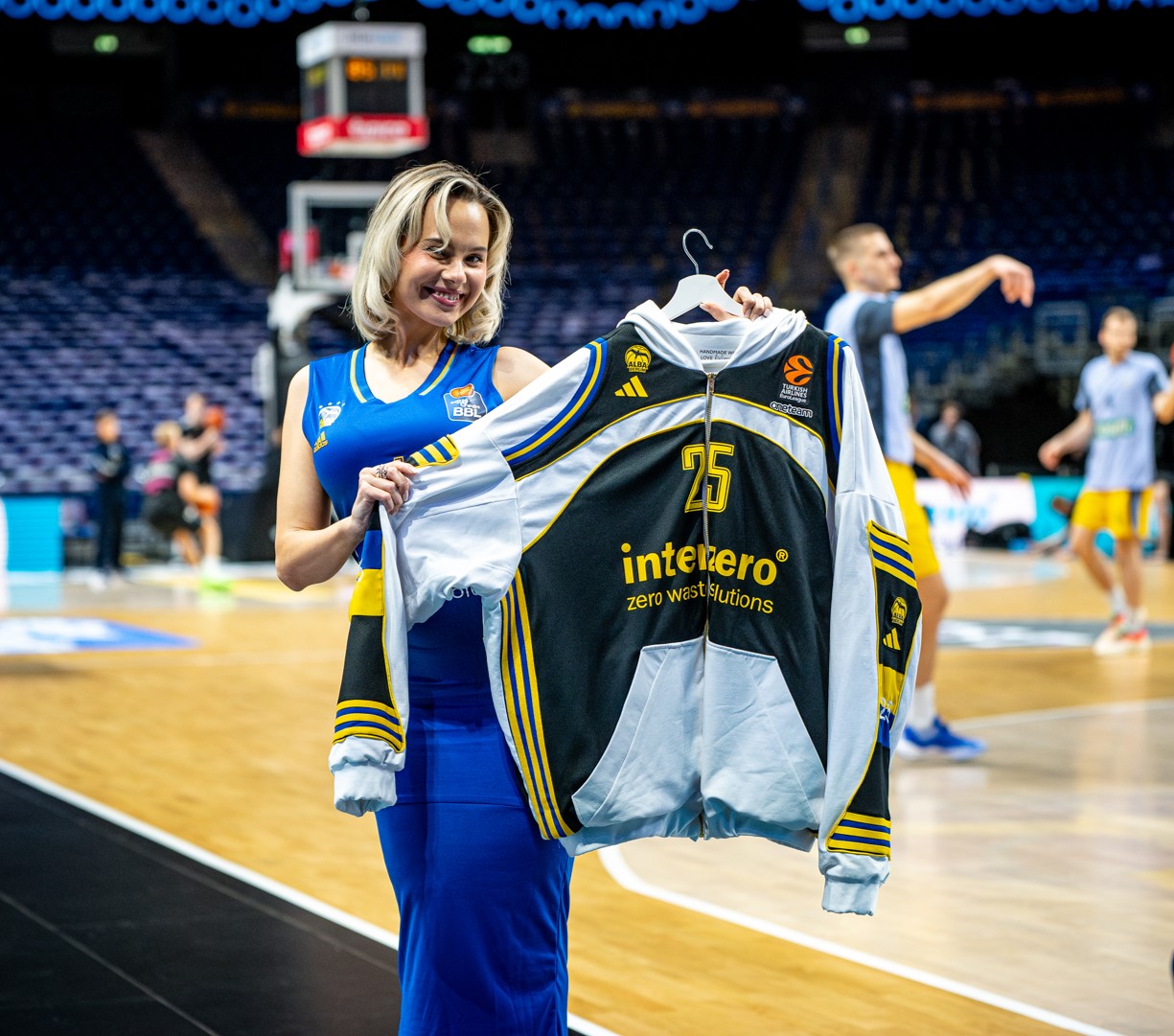
Together with the basketball club ALBA BERLIN, we want to set an example for sustainability in sport: Instead of disposing of worn-out jerseys, one was transformed into something new by creator Fiona - a handmade and unique piece. After all, millions of tonnes of clothing still end up as waste every year. Yet many textiles could be reused or reprocessed. Just like old jerseys! As the environmental partner and main sponsor of ALBA BERLIN, we show how the circular economy can also be creatively practised in sport. With this jacket, we are providing an impulse for the responsible use of textiles. We are aware that there is still a big step to be taken towards a circular system in the textile industry.
The jacket is therefore a statement on how sustainability and style can be embraced. You can find the conditions of participation for the competition here.
Building textile cycles together
The textile market needs a new, stable and sustainable recycling system. Together with the industry, Interzero wants to put this on a secure footing. Around 92 million tonnes of used textiles are currently disposed of worldwide every year - a lorry load every second. Today, the used textiles business is primarily focussed on the export of reusable textiles. Recycling hardly takes place. The reuse rate of recycled fibres in textiles is negligible at around one per cent. Today's used clothing system functions almost exclusively on a linear basis and is barely viable due to the ongoing crisis on the market. The industry is at a tipping point.
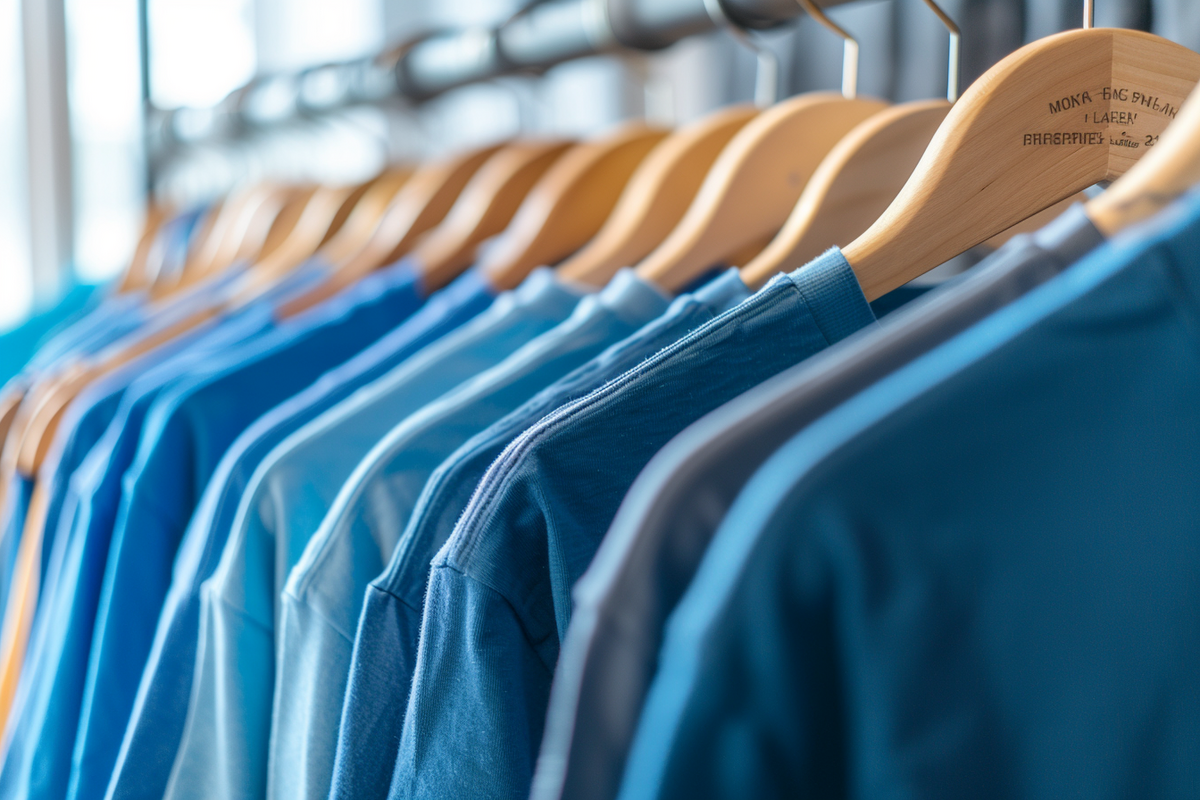
Our goal
We want to close the textile loop by scaling fibre-to-fibre recycling. The basis for this is a holistic industry solution with a suitable collection and sorting infrastructure.
Our role
Interzero plans to close the infrastructure gap in the industry as a closed-loop system operator. We use our many years of expertise in the development of EPR solutions, collection systems and the operation of automated sorting systems to close the infrastructure gap in the textile industry between collection and recycling.

